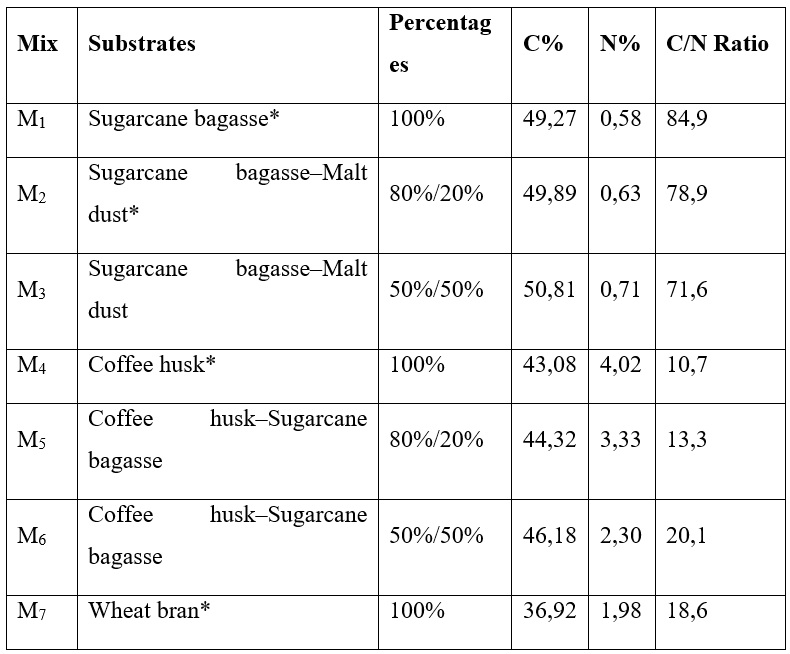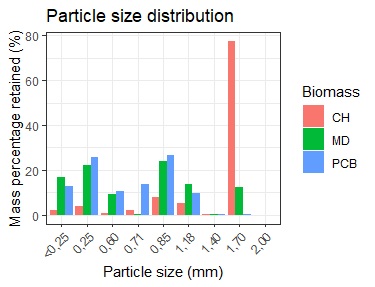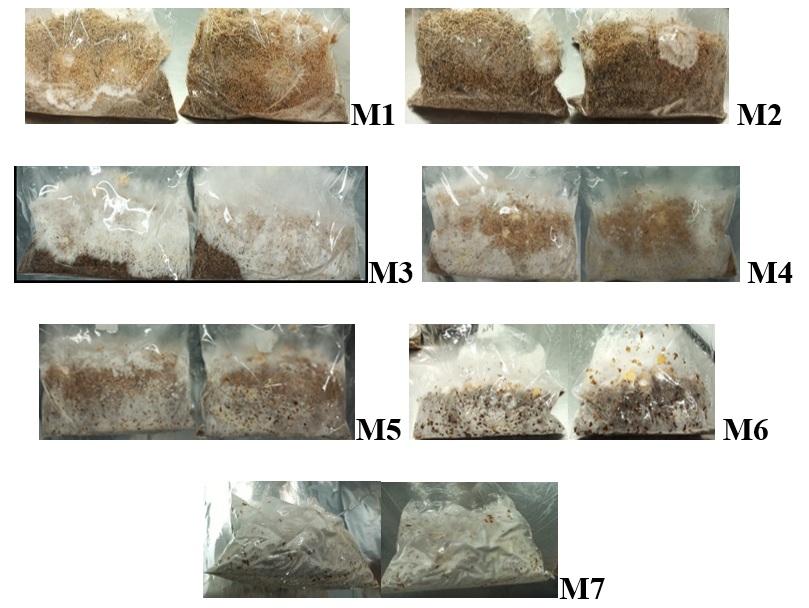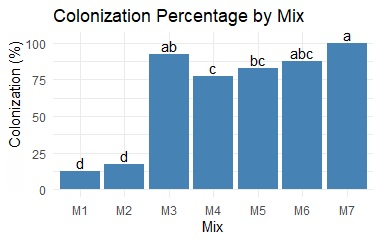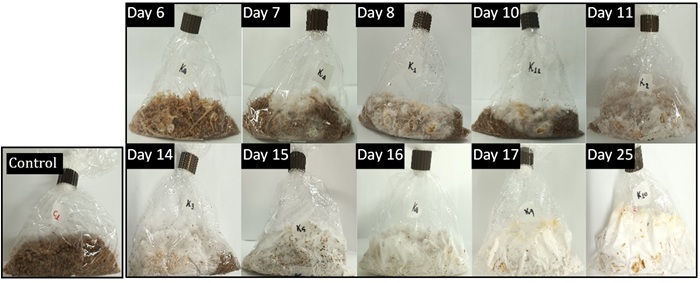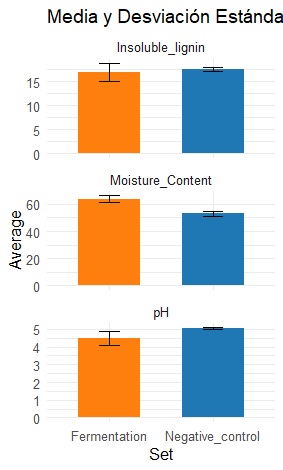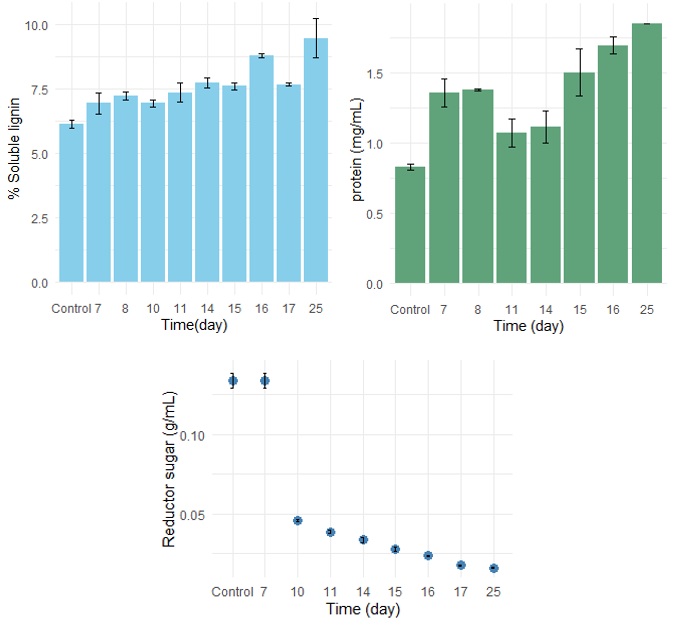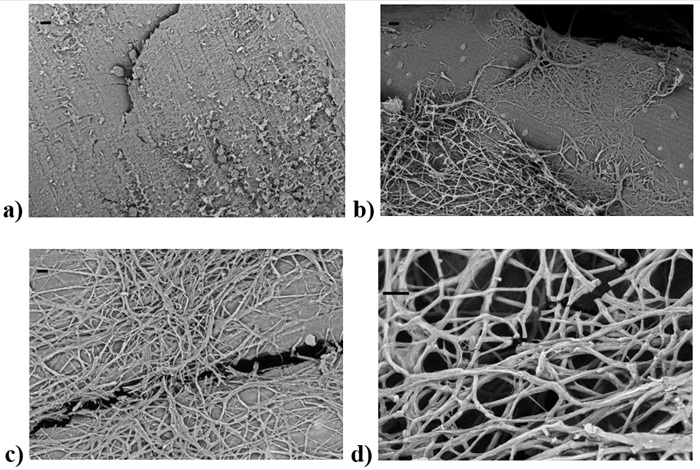[1] C. Sharma and K. Qanungo, “An overview: Recycling of expanded polystyrene foam,” AIP Conf Proc, vol. 2535, no. 1, p. 30019, May 2023, doi: 10.1063/5.0111982.
[2] N. García, “Evaluación del impacto ambiental de la aplicación de un plan de gestión posconsumo de poliestireno expandido (EPS) utilizado en el envase de alimentos en Colombia,” Thesis, Universidad EAN, Bogotá, 2019.
[3] J. Arandes, J. Bilbao, and D. López, “Reciclado de residuos plásticos,” Revista Iberoamericana de polímeros, vol. 5, no. 1, pp. 28–45, 2004.
[4] K. Joshi, M. K. Meher, and K. M. Poluri, “Fabrication and Characterization of Bioblocks from Agricultural Waste Using Fungal Mycelium for Renewable and Sustainable Applications,” ACS Appl Bio Mater, vol. 3, no. 4, pp. 1884–1892, Apr. 2020, doi: 10.1021/acsabm.9b01047.
[5] S. Sivaprasad, S. K. Byju, C. Prajith, J. Shaju, and C. R. Rejeesh, “Development of a novel mycelium bio-composite material to substitute for polystyrene in packaging applications,” Materials Today: Proceedings, vol. 47, no. 15, 2021. doi: 10.1016/j.matpr.2021.04.622.
[6] B. P. Bohórquez Sánchez and N. Ramírez Osma, “Desarrollo y caracterización de un material biodegradable a partir de desechos cerveceros y micelio del hongo Pleurotus ostreatus,” Thesis, Universidad de los Andes, Bogotá, 2020.
[7] A. Butu, S. Rodino, B. Miu, and M. Butu, “Mycelium-based materials for the ecodesign of bioeconomy,” Dig J Nanomater Biostruct, vol. 15, no. 4, pp. 1129–1140, 2020, doi: 10.15251/djnb.2020.154.1129.
[8] A. Doroški, A. Klaus, A. Režek Jambrak, and I. Djekic, “Food Waste Originated Material as an Alternative Substrate Used for the Cultivation of Oyster Mushroom (Pleurotus ostreatus): A Review,” Sustainability, vol. 14, no. 19, 2022, doi: 10.3390/su141912509.
[9] C. Sánchez, “Cultivation of Pleurotus ostreatus and other edible mushrooms,” Appl Microbiol Biotechnol, vol. 85, no. 5, pp. 1321–1337, 2010, doi: 10.1007/s00253-009-2343-7.
[10] J. Quintero, G. Feijoo, and J. Lema, “Producción de enzimas ligninolíticas con hongos basidiomicetos cultivados sobre materiales lignocelulósicos,” Vitae, vol. 13, no. 2, pp. 61–67, 2006.
[11] D. Alemu, M. Tafesse, and Y. Gudetta Deressa, “Production of Mycoblock from the Mycelium of the Fungus Pleurotus ostreatus for Use as Sustainable Construction Materials,” Advances in Materials Science and Engineering, vol. 2022, 2022, doi: 10.1155/2022/2876643.
[12] P. Leal Rocha and L. C. Rodriguez Moreno, “Desarrollo y evaluación de las propiedades mecánicas de un biomaterial para el desarrollo de biobloques obtenido a partir de biomasa fúngica y residuos agroindustriales,” Thesis, Fundación Universidad de América, Bogotá, 2022.
[13] A. Medina-Gutierrez, P. Medina-Rodriguez, A. Suesca-Díaz, and D. Morales-Fonseca, “Producción de un material biocompuesto a base de micelio por medio de fermentación sólida usando Pleurotus ostreatus,” Biotecnología en el Sector Agropecuario y Agroindustrial, vol. 22, no. 2, 2024.
[14] S. Castillo Larrarte and N. Lozano Escorcia, “Valorización de residuos de la industria cervecera artesanal empleando Pleurotus Ostreatus como estrategia de sostenibilidad ambiental para el sector,” Thesis, Universidad de América, Bogotá, 2024.
[15] L. S. Vásquez, V. Sopo, A. Suesca-Díaz, and D. Morales-Fonseca, “Elaboration of a Biomaterial from Pleurotus ostreatus Mycelium and Residual Biomass, as an Alternative to Synthetic Materials,” Chem Eng Trans, vol. 99, pp. 91–96, 2023, doi: 10.3303/CET2399016.
[16] E. Colmenares, L. Bautista, and C. Oliveros, “Material ecológico con fines de embalaje a partir del hongo Pleurotus ostreatus y residuos orgánicos agroindustriales,” Revista Científica Unet, vol. 30, 2018.
[17] M. Ruilova and A. Hernández, “Evaluación de residuos agrícolas para la producción del hongo Pleurotus ostreatus,” ICIDCA sobre los derivados de la caña de azúcar, vol. 48, no. 1, pp. 54–59, 2014.
[18] E. G. Silveira Junior, V. H. Perez, S. C. S. E. de Paula, T. da C. Silveira, F. L. Olivares, and O. R. Justo, “Coffee Husks Valorization for Levoglucosan Production and Other Pyrolytic Products through Thermochemical Conversion by Fast Pyrolysis,” Energies, vol. 16, no. 6, 2023, doi: 10.3390/en16062835.
[19] O. M. Menjura and Z. Sanchez, “Ajuste de un modelo matemático para la combustión de bagazo de caña en una cámara Ward-Cimpa,” Ciencia & Tecnología Agropecuaria, vol. 15, no. 2, pp. 133–151, 2014, doi: 10.21930/rcta.vol15_num2_art:355.
[20] J. Zhou, Y. Wu, D. Liu, and R. Lv, “The effect of carbon source and temperature on the formation and growth of Bacillus licheniformis and Bacillus cereus biofilms,” LWT, vol. 186, no. September, p. 115239, 2023, doi: 10.1016/j.lwt.2023.115239.
[21] M. C. Cujilema-Quitio, G. León-Revelo, M. Rizo Porro, L. Taramona Ruiz, and L. B. Ramos-Sánchez, “Producción de lipasas por fermentación sólida con Aspergillus niger: Influencia del pH,” Centro Azúcar, vol. 45, no. 4, pp. 1–9, 2018.
[22] Sluiter, A. D., & Templeton, D. W. “NREL/TP-510-42618 Determination of Structural Carbohydrates and Lignin in Biomass”, Technical report, NREL, 2008. http://www.nrel.gov/biomass/analytical_procedures.html
[23] G. L. Miller, “Use of dinitrosalicylic acid reagent for determination of reducing sugar. Analytical Chemistry, 31: 426-428.,” Analytical Chemistry, vol. 31, pp. 426-428, 1959.
[24] J. C. Oviedo, “Evaluación de la producción de proteína fúngica a partir de Pleurotus pulmonarius empleando residuos de poscosecha de maíz,” Thesis, Universidad de Antioquia, Medellín, 2014.
[25] Z. G. Li, Y. Q. Sun, W. L. Zheng, H. Teng, and Z. L. Xiu, “A novel and environment-friendly bioprocess of 1,3-propanediol fermentation integrated with aqueous two-phase extraction by ethanol/sodium carbonate system,” Biochem Eng J, vol. 80, pp. 68–75, 2013, doi: 10.1016/j.bej.2013.09.014.
[26] J. Mercado and J. Ttupa, “El bagazo de caña de azúcar como sustrato para la producción de Pleurotus ostreatus (hongo de ostra),” Thesis, Universidad Nacional de Callao, Callao 2023.
[27] N. Attias, E. Tarazi, and J. Y. Grobman, “Developing novel applications of mycelium based bio-composite materials for design and architecture,” Building with bio-based materials: Best practice and performance specification, vol. 1, no. 10, pp. 1-10, September, 2017.
[28] H. T. Hoa, C. L. Wang, and C. H. Wang, “The effects of different substrates on the growth, yield, and nutritional composition of two oyster mushrooms (Pleurotus ostreatus and Pleurotus cystidiosus),” Mycobiology, vol. 43, no. 4, pp. 423–434, 2015, doi: 10.5941/MYCO.2015.43.4.423.
[29] N. R. Curvetto, D. Figlas, R. Devalis, and S. Delmastro, “Growth and productivity of different Pleurotus ostreatus strains on sunflower seed hulls supplemented with N-NH4+ and/or Mn(II),” Bioresour Technol, vol. 84, no. 2, pp. 171–176, 2002, doi: 10.1016/S0960-8524(02)00013-5.
[30] M. B. Ruilova Cueva, A. Hernández, and Z. Niño-Ruiz, “Influence of C/N ratio on productivity and the protein contents of Pleurotus ostreatus grown in differents residue mixtures,” Rev. FCA UNCUYO, vol. 49, no. 2, pp. 331–334, 2017.
[31] D. Alemu, M. Tafesse, and A. K. Mondal, “Mycelium-Based Composite: The Future Sustainable Biomaterial,” International journal of biomaterials, vol. 1, 2022. doi: 10.1155/2022/8401528.
[32] M. Mäkelä, S. Galkin, A. Hatakka, and T. Lundell, “Production of organic acids and oxalate decarboxylase in lignin-degrading white rot fungi,” Enzyme and Microbial technology, vol. 30, no. 4, 2002, doi: 10.1016/S0141-0229(02)00012-1.
[33] N. Attias et al., “Mycelium bio-composites in industrial design and architecture: Comparative review and experimental analysis,” J Clean Prod, vol. 246, p. 119037, 2020, doi: 10.1016/j.jclepro.2019.119037.
[34] W. Aiduang, J. Kumla, S. Srinuanpan, W. Thamjaree, S. Lumyong, and N. Suwannarach, “Mechanical, Physical, and Chemical Properties of Mycelium-Based Composites Produced from Various Lignocellulosic Residues and Fungal Species,” Journal of Fungi, vol. 8, no. 11, Nov. 2022, doi: 10.3390/jof8111125.
[35] S. Montoya, “Obtención de enzimas lignocelulolíticas.” Thesis, Universidad de Caldas Manizales, 2012.
[36] K. S. Franco Peña, “Parámetros de crecimiento de Pleurotus ostreatus en cultivo semi-sólido,” Thesis, Universidad de los Andes, Bogotá, 2018.
[37] ASTM, “ASTM D695: Standard test method for compressive properties of rigid plastics,” ASTM International, vol. 08, April 2003, pp. 1–7, 2015, doi: 10.1520/D0695-23.2.
[38] I. Milovanović, I. Brčeski, M. Stajić, A. Korać, J. Vukojević, and A. Knežević, “Potential of pleurotus ostreatus mycelium for selenium absorption,” Scientific World Journal, vol. 2014, 2014, doi: 10.1155/2014/681834.
[39] M. Haneef, L. Ceseracciu, C. Canale, I. S. Bayer, J. A. Heredia-Guerrero, and A. Athanassiou, “Advanced Materials from Fungal Mycelium: Fabrication and Tuning of Physical Properties,” Sci Rep, vol. 7, no. December 2016, pp. 1–11, 2017, doi: 10.1038/srep41292.










